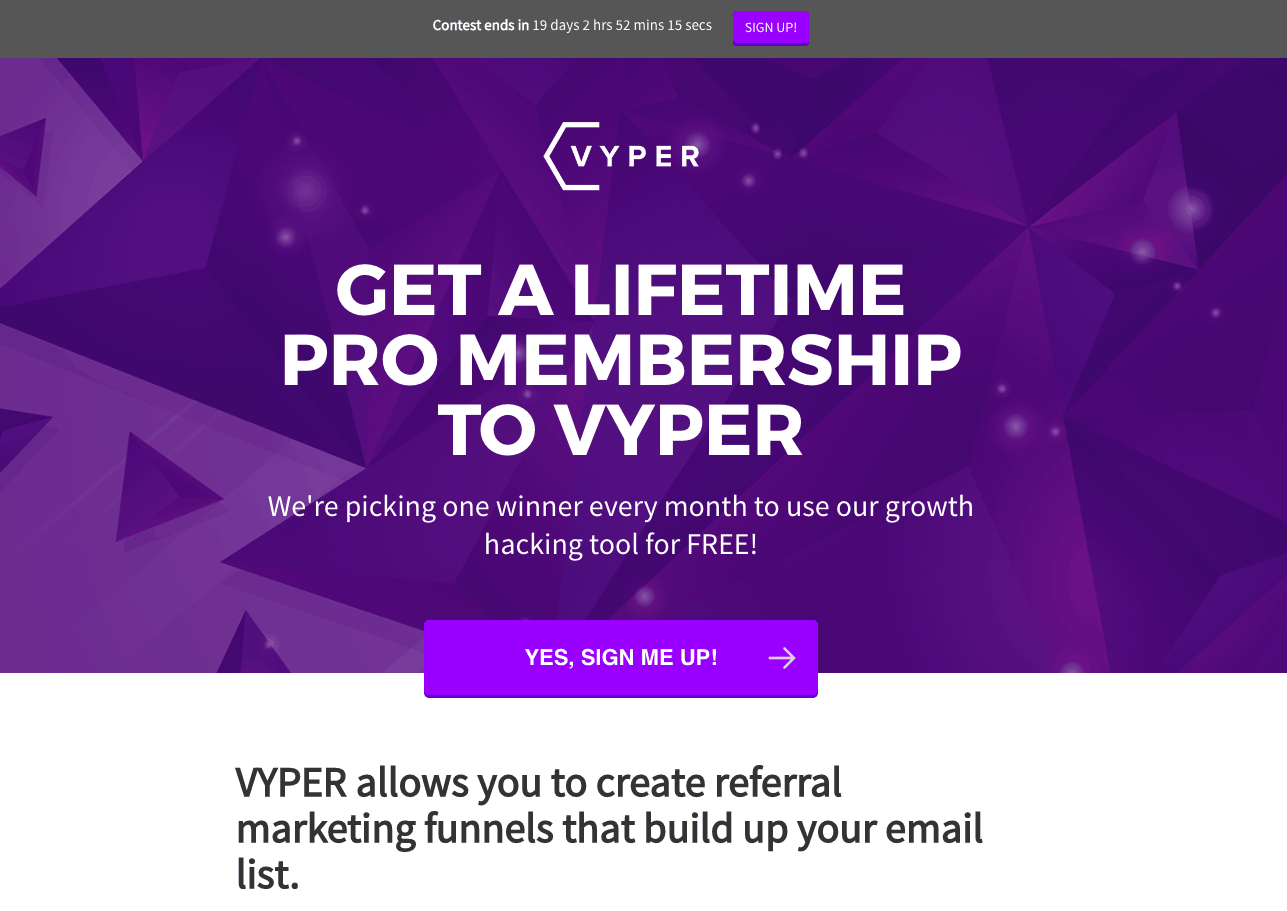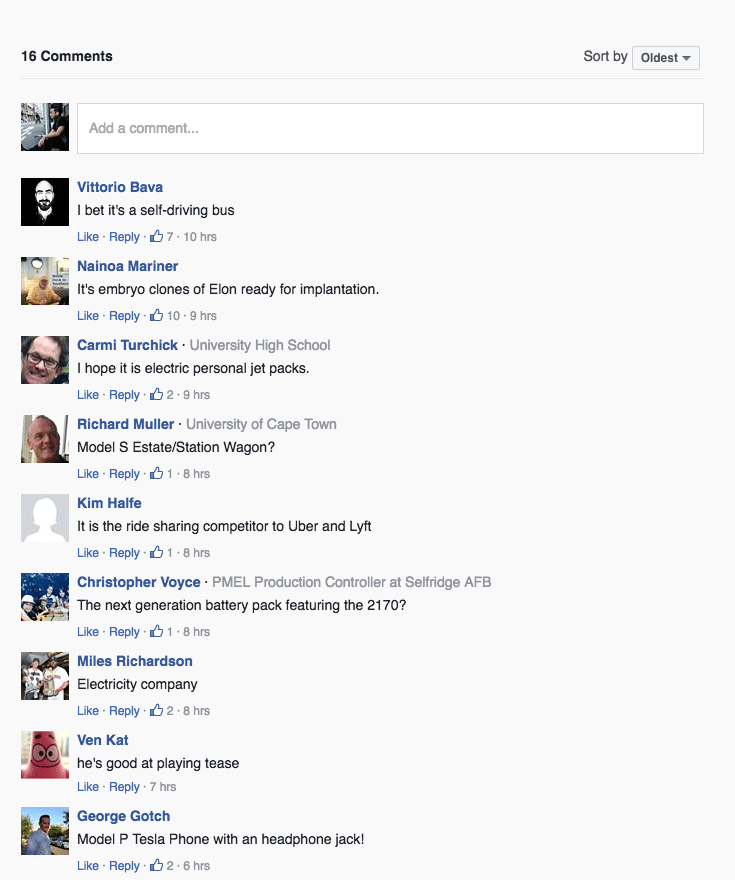This is a post by one of our new regular contributors to VYPER, Ian Chandler of Narrative Marketers.
You probably know that VYPER gives you the ability to create contests that skyrocket your list numbers. But why use interactive content in the first place? What’s so great about it?
As it turns out, interactive content is the future of marketing. And I’m not talking about just contests––I’m talking about everything.
Marketing itself is becoming more and more interactive every day. Contests are a piece of the puzzle, and it’s time to look at the big picture.
This Is Your Brain on Interaction
For decades, marketing has created passive users. How many times have you seen the same ad over and over again? Maybe there’s something unique about it, but ultimately it’s just an ad. You’re passive while watching it. You don’t get to experience the brand.
That’s been changing recently thanks to interactive content. Interactive content is any kind of content that allows the user to directly participate. Contests, quizzes, games, and surveys are just a few examples.
Interactive content is getting so big because marketers are figuring out that users want to experience a brand first-hand. When marketing collides with the real world, users get a completely new experience.
A great example is how Reebok advertised their new shoes in Stockholm. A speed cam was mounted on a small outdoor kiosk. Anyone who ran faster than 17kph won a free pair of shoes.
This was no ordinary ad; this was an experience that transformed ordinary passersby into runners.

Those people who interacted with the ad came away with a one-of-a-kind memory. The interaction led to something bigger (the ability to break away from the day and have fun), and that left a lasting impression.
Interaction is a way of transforming your users. The reason that people love grandiose stories is because most people live rather plain lives. Many are unsatisfied with their life. Stories give them a way to escape, and directly participating in a story is even more cathartic.
Compare this to passively viewing an ad, which seems pathetically weak compared to the interaction.
Marketing needs disruption. It needs a future that’s free of clickbait ads and spammy email marketing. We’re living in an age of value, and we need to be giving our users the best experience ever. Interaction is a great way of doing that.
Creating Interaction
Interaction comes in all shapes and sizes, but it’s not a one size fits all scenario. Different forms of interaction will work with different brands. For example, it would be comical if a law firm started using Snapchat.
It’s key to identify the types of interactive content that work well with your brand.
Interaction is created whenever your user has the opportunity to participate in your brand. This includes social networks, comment sections, and interactive media (contests, quizzes, etc.).
This isn’t an all-inclusive list, however, as there are constantly new ways to interact with users. But for this article, we’ll focus on these three areas.
Interaction on social networks
Social networks are probably what you think of when you hear “interaction” and “users.” Many people have several social network accounts, which also means that they have more opportunities to participate.
But this is where most brands go wrong. They think that the inherent capabilities of social networks (liking, commenting, sharing) are interactive enough. And they’re dead wrong.
The abilities to like, comment, and share are great, but to truly stand out, you need to use these as a means to an end, not the end itself.
For instance, if someone is scrolling through their Twitter feed and sees a Promoted Tweet, they might feel a bit jaded about it, especially if it’s a thinly veiled sales tactic like a coupon code with a description that resembles a meme.
But imagine if someone’s scrolling through Twitter and sees what looks like the first sentence of a book. It’s a Promoted Tweet, all right, but it’s strange.
If they click more, they discover a micro-story about your brand. It might not translate into a sale, but it has a much better chance than a traditional ad.
This is just one example––social networks are ideal places to experiment with interactive content. Take advantage of their social capabilities, and use them to create standout interaction
Interaction in comment sections
This seems pretty straightforward, but so many brands do it wrong. How many times have you seen comment sections with no participation from the brand? Generally, brands only respond when people complain.
But when brands devote time to responding to users’ comments, both good and bad, it creates an interesting dialogue.
Most people still see brands as faceless entities, so by responding, you’re giving your brand a friendly face. You’re bridging the gap between brand and consumer, and that’s something the consumer will always appreciate.
Or you can think outside the box. We’ll use the example of creating a short story on Twitter. What if you created a short story in comment sections?
Readers could follow your latest post to get updates on the story. Obviously this isn’t for every brand, but it’s an interesting thought experiment that should get you thinking about what you can do with “ordinary” tools.
Interactive media
Here’s where it gets really interesting. Interactive media like contests and quizzes are fully user-based. The user gets to choose their own adventure, so to speak, and participate in the brand. This is a new phenomenon, but the rising popularity of interactive media shows that it really works, and it’s powerful.
Interactive media can also create new leads from thin air. It sounds magical, but it’s 100% true. Say someone stumbles upon your site and finds a fun quiz. They take it and then get an offer to sign up for more content like that. If they enjoyed the quiz, they’ll likely sign up.
And contests are perfect for lead generation because everyone wants to win, and they want to be notified if they win. It’s almost unfair how powerful these techniques are.
Of course, you have to consistently produce amazing content. If someone signs up for a contest and gets only boring sales emails from you, they’re going to unsubscribe.
But if you keep producing interesting, relevant content (both interactive and traditional), you’ll have a much better retention rate.
Giving up the power
If you remember one thing from this article, let it be this. When you’re creating interactive experiences (or doing any sort of marketing, for that matter), give the power over to the user.
Don’t try to sell to people––give them an adventure that happens within the world of your brand.
Those people who interacted with the Reebok ad didn’t feel like they were being sold to. They felt like they were taking part in something fun. That should be your goal with interactive content. Give up the power, and you might be surprised at the results.
Ian Chandler is a narrative marketer and writer based in Ohio. He helps businesses leverage the power of story at Narrative Marketers. He is the author of Narrative Marketing: Using Content Marketing To Turn People Into Heroes.








For some reason it took out my question, and just posted my last post! So here we go again. Rebok had the means to run a contest and reward it’s winners with new shoes. But how do I run a contest without the means to offer a tangible reward? Please email me because I won’t be returning back to this page, I am headed back to my class, Interaction on Social Networks. Thanks!
Thanks for sharing why it is important to engage in interactive marketing. Engagement and interaction greatly enhance the brand recall but as you have said the key is to identify the types of interactive content that work well with your brand.